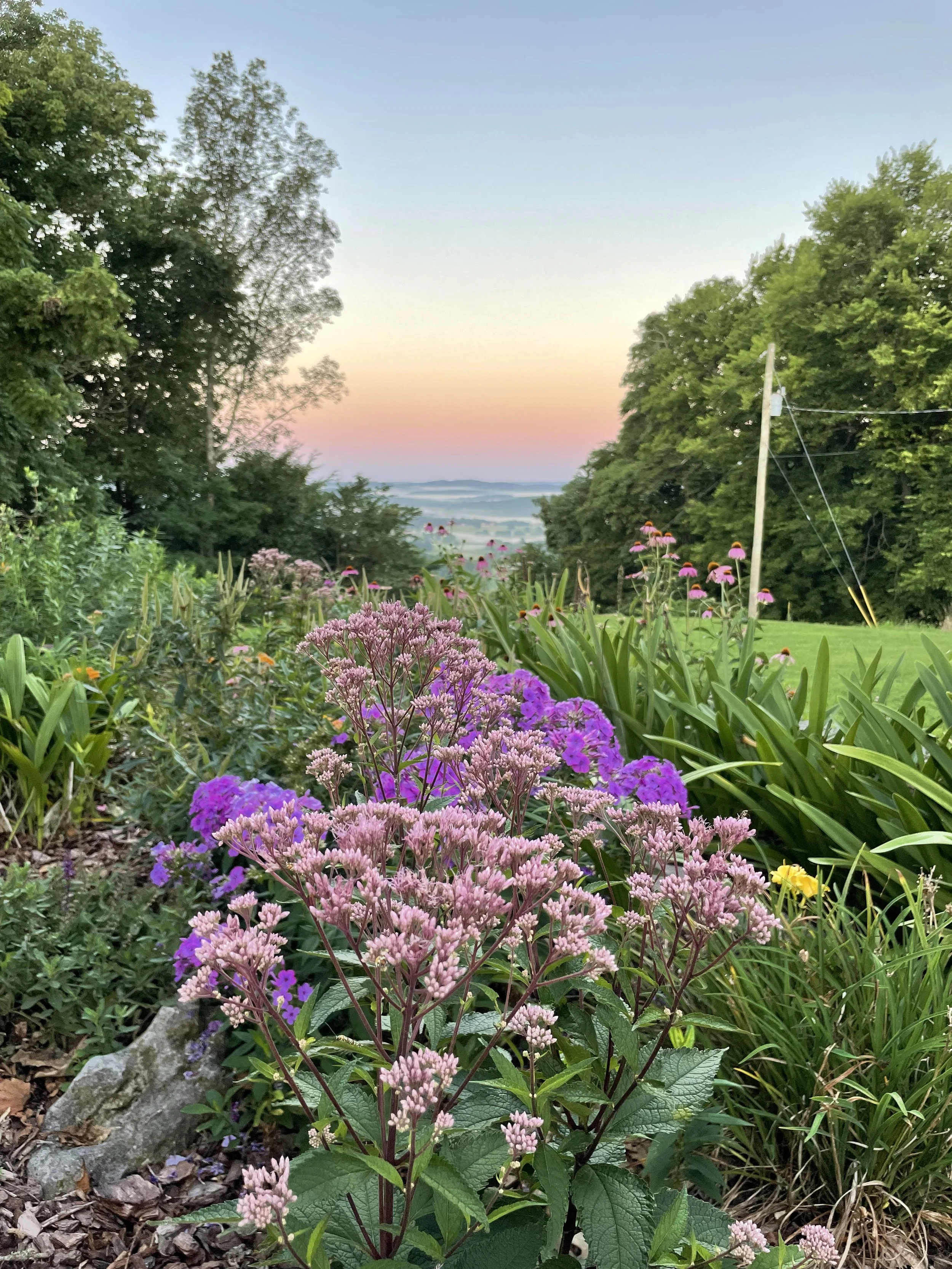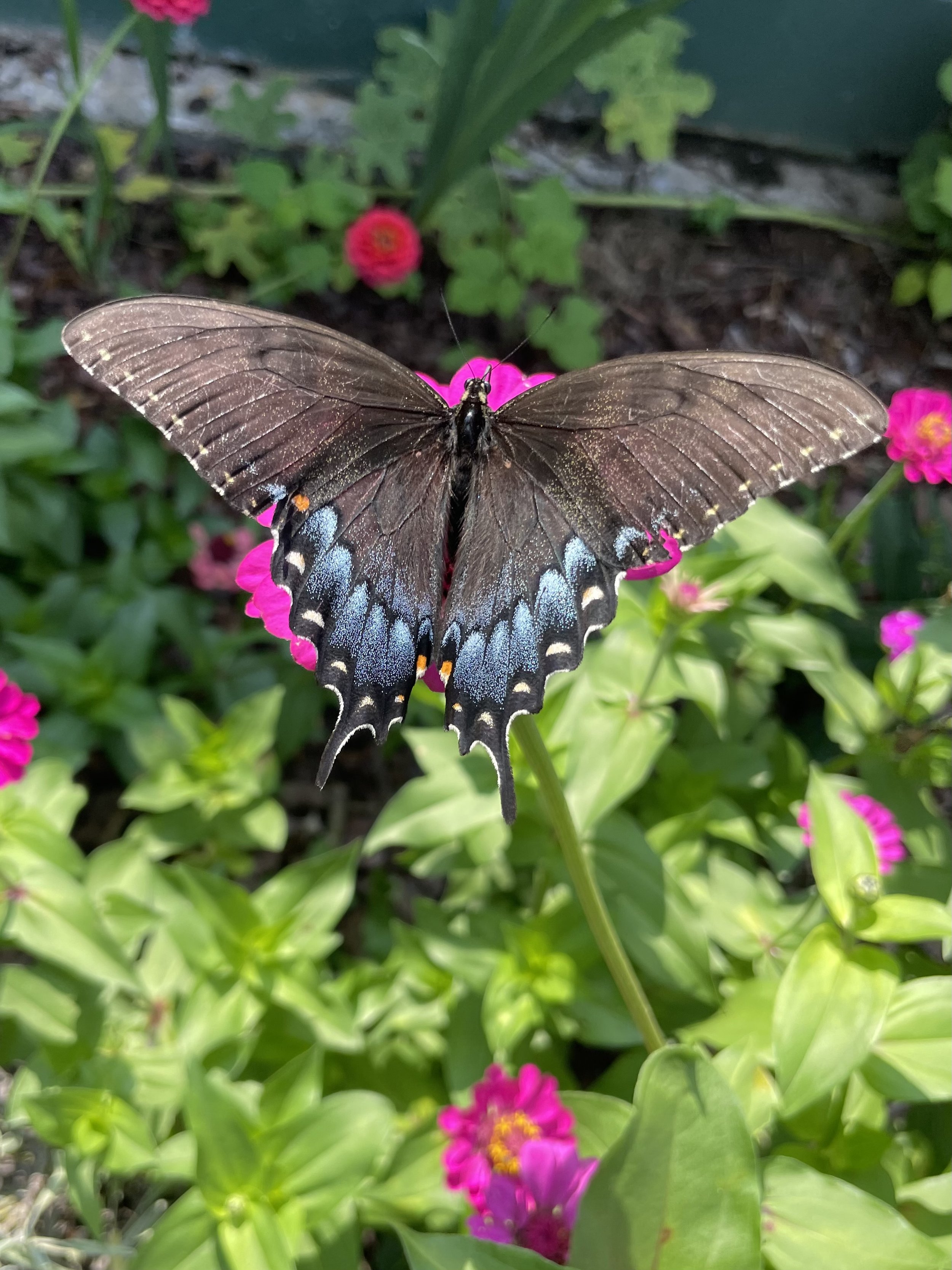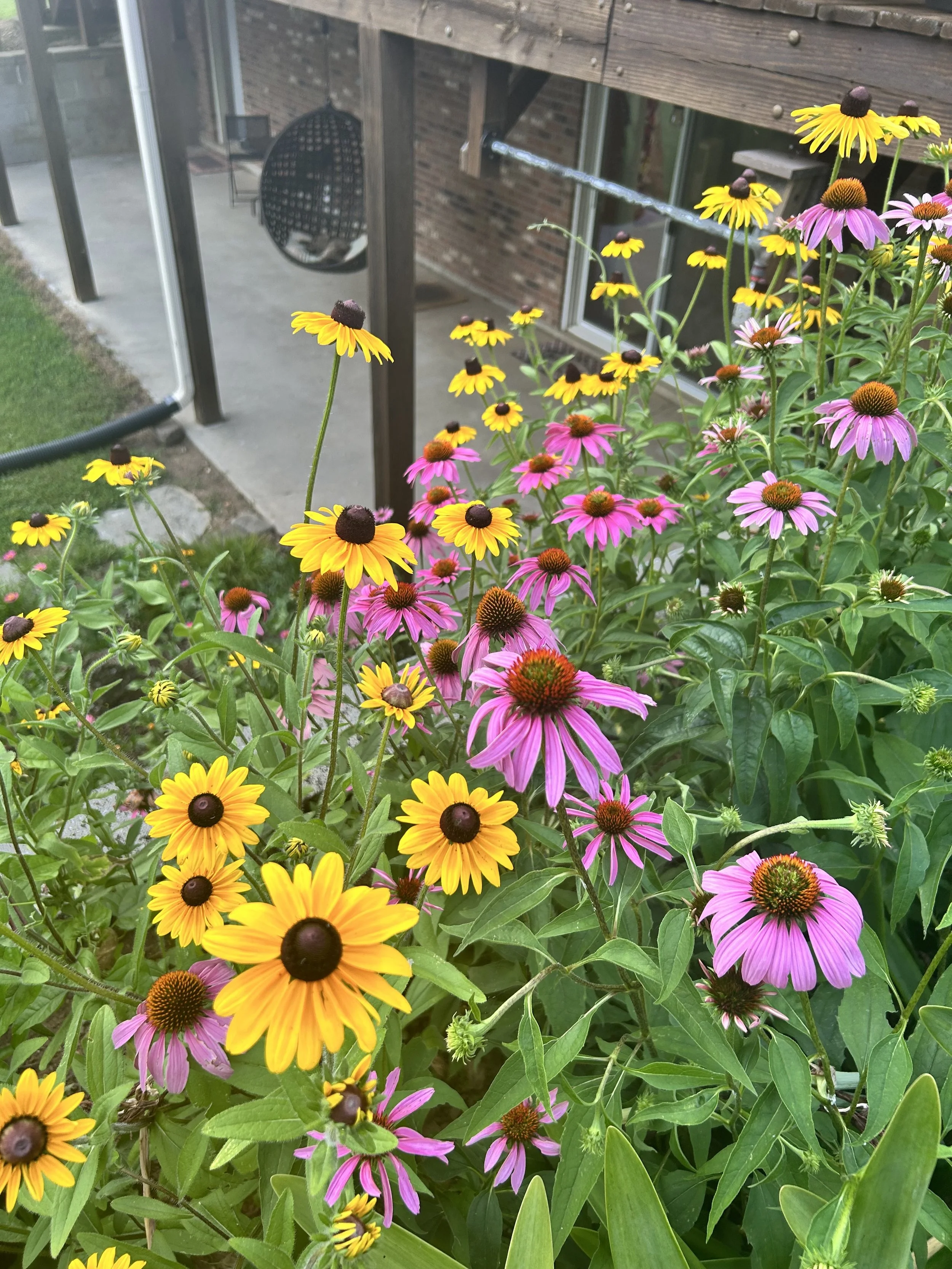Summer 2023 Garden Tour
Here’s a glimpse of what has been happening in my flower garden this summer!
purple coneflower (Echinacea purpurea)
The echinacea has thrived this year. The flowers attract goldfinches during the summer months, and the plants provide cover for other songbirds well into the fall and winter.
cabbage white (Pieris rapae) at dense blazing star (Liatris spicata)
Liatris, also known as blazing star and gayfeather, is another native perennial. The tall, bottlebrush spires of flowers attract all sorts of pollinators, such as this cabbage white.
Female eastern tiger swallowtail (Papilio glaucus) at a zinnia. Males do not have the iridescent blue coloring on the hindwings. Papilio is the Latin word for “butterfly,” and glaucus comes from the Greek word glaukos, meaning “gleaming” or “gray.” For further etymology of glaucus, click here.
Eastern tiger swallowtails are always a favorite.
Dark morph female eastern tiger swallowtail (Papilio glaucus) at zinnia
Above is another female eastern tiger swallowtail, but this one looks different because it is in dark morph. Female eastern tiger swallowtails may be confused with spicebush, pipevine, or black swallowtails. I found this article by the New Jersey Butterfly Club to be very helpful in distinguishing among the four species of dark swallowtails.
Echinacea purpurea (purple coneflower) and zinnias
The echinacea has finally gotten established in the lower section.
Female eastern tiger swallowtail (Papilio glaucus) at spotted Joe Pye weed (Eutrochium maculatum). The small orange and white insect to the left of the swallowtail is an ailanthus webworm (Atteva aurea). This species of ermine moth is native to the American tropics.
This year I planted three new spotted Joe Pye weeds (Eutrochium maculatum) in the upper part of the garden. Like Liatris, Eutrochium maculatum belongs to the aster family (Asteraceae). The sweet-smelling flowers attract lots of skippers, butterflies, and bees. So far, the Joe Pye weeds are loving the drier, rocky soil. I love the dusty pink color, as well as the texture they add to in garden.










